|
The funding formula is the key parameter used to
assess institutions’ needs. But in finalising its funding recommendations, the UGC also takes into account the
special needs of individual institutions and other factors not captured by the formula and will introduce extraformulaic adjustments where required.
Earmarked grants for specific purposes are allocations outside the block grant system. Examples are the
earmarked research grants, grants for knowledge transfer activities, and grants for areas of excellence scheme.
Once determined, recurrent funding for a triennium will not be adjusted during the period except for adjustments
to take into account changes in the indicative tuition fee levels, new initiatives from the Government and
civil service pay adjustments.
Following the civil service 2009 pay cut and 2010 pay rise which took effect
from 1 January 2010 and 1 April 2010 respectively, the subvention for 2010/11 was reduced by approximately
$220 million.
| Diagrammatic Illustration
of UGC Recurrent Grant Cycle
|
|
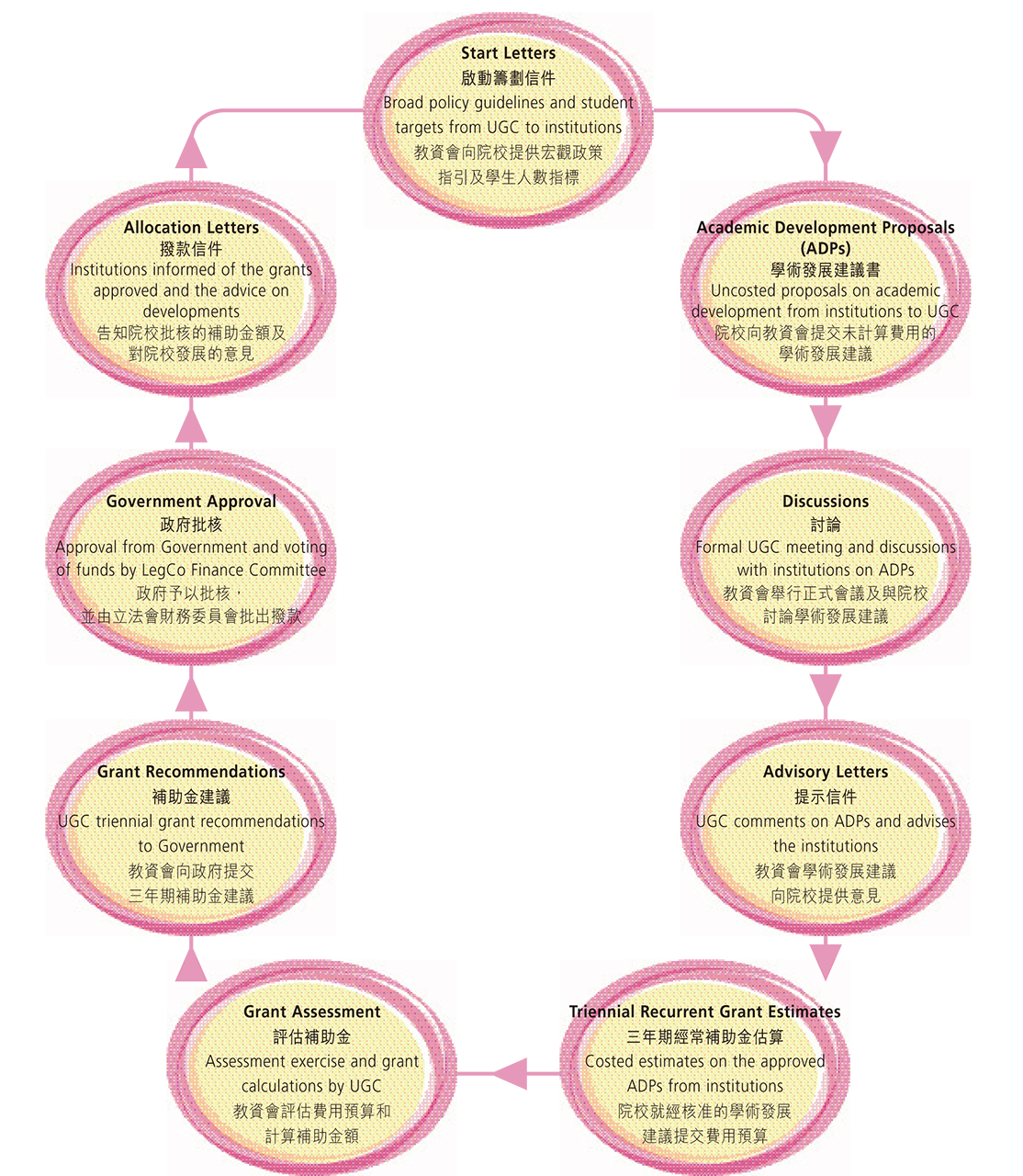
|
Financial Reporting
and Monitoring
The UGC-funded institutions are autonomous statutory
bodies governed by their respective Ordinances. They enjoy institutional autonomy in such areas as curriculum
design, selection and recruitment of staff and students, and internal allocation of finances. While respecting the institutional autonomy of our funded institutions in
allocating and managing their internal finances, the UGC adopts an accountable and transparent approach in
ensuring the public money entrusted to the institutions are applied meaningfully and provide value for money.
To provide institutions with substantial financial freedom,
the bulk of the subvention to institutions are in the form of the block grant, which provides for a “one-line” allocation
of resources for a funding period (usually a triennium) without prescription attached as to how it should be spent. The major requirement is that such grant must
be used within the ambit of “UGC-fundable activities” while adhering to approved student number targets. The
precise amount of the block grant has to be approved by the Finance Committee of the Legislative Council
before the start of every triennial funding period, after which the responsibility falls squarely upon the institutions to apply
those funds appropriately.
•
Institutions are accountable for any unspent
balances of the public funds
While being entitled to maintain a general reserve
of up to 20% of the institution’s total approved recurrent grants (excluding any earmarked grants) in
a triennium for future and new development needs, any excess of that level has to be returned to the
UGC. The use of the general reserve is subject to the same rules and regulations governing the use of
recurrent grants. For grants earmarked for specific purposes, any amount unspent after the close of
financial year or approved funding period must be returned.
•
Institutions provide regular reports on their
finances to the UGC
We require institutions to submit for each financial
year an annual return on the use of all UGC funds. We also require Heads of Institutions to provide a
Certificate of Accountability to the UGC annually to confirm that the public funds allocated via the UGC
have been spent in accordance with the rules and guidelines as agreed with the UGC.
•
No cross-subsidisation of UGC resources to
non-UGC-funded activities
Recurrent grants are provided to the UGC-funded
institutions to support their academic and related activities based on approved UGC-funded activities.
As such, there should be no cross-subsidisation of UGC resources to non-UGC-funded activities
(including, but not limited to, self-financing activities). To avoid hidden subsidy to non-UGC-funded
activities, the institutions should levy overhead charges on such activities, including projects funded
by other Government departments/agencies and projects/programmes conducted by their selffinancing
subsidiaries or associates.
•
Institutional finances are subject to professional
accounting standards and external audit processes
Institutions are required to keep proper accounting
records in accordance with the Hong Kong Financial Reporting Standards and the house guidelines on
recommended accounting practice adopted by the UGC where appropriate. Institutions also arrange
their own external annual audits on their financial statements and the annual return, in accordance
with prevalent assurance engagement standards adopted by the audit profession. For the purpose
of efficient use of public funds, institutions are also subject to examination by the Director of Audit.
•
Financial affairs working Group
From time to time, the UGC may express interest in
the financial well-being of UGC-funded institutions and enquire on specific financial issues concerning
the UGC sector. To strengthen the financial monitoring effort, the UGC established a new
Financial Affairs Working Group in January 2011 with professional expertise to work with institutions
to help ensure their continuing good financial governance and sound financial planning.
Capital
Grants
The UGC supports capital works projects of institutions
for UGC-approved activities by capital grants sought from the Government on an annual basis under the Capital
Programme, and the Alterations, Additions, Repairs and Improvements Programme. Details of the two capital
grants programmes are illustrated in the flowcharts below:
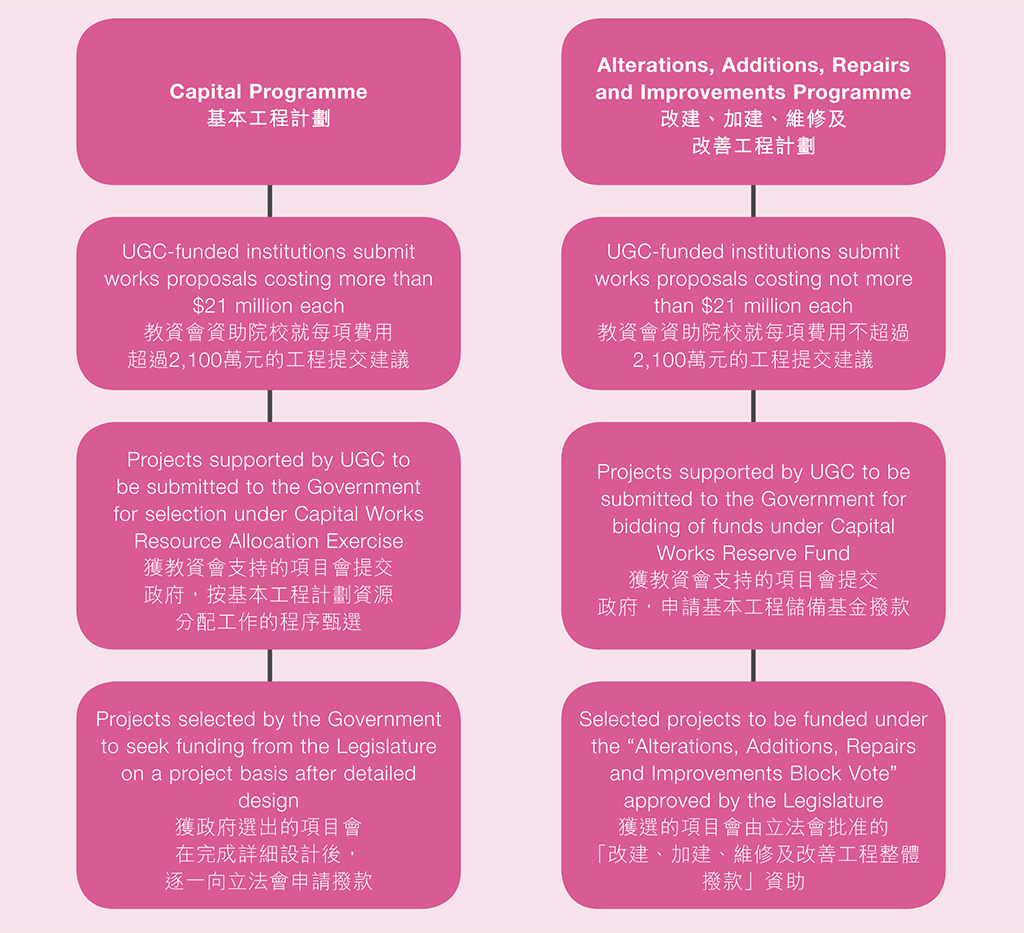
In 2010-11, there are 26 ongoing capital works projects
under the Capital Programme with a total estimated project cost of some $12 billion. The expenditure on
these projects in 2010-11 was about $1.8 billion. With the commencement of superstructure works of most projects,
the spending in 2011-12 is anticipated to increase to some $3.6 billion.
In 2010-11, the UGC supported a total of 32 new Alterations, Additions, Repairs and Improvements projects
submitted by institutions with a total estimated cost (to be spread over up to three years) of some $530 million.
To meet the expenditure of the ongoing and newly approved projects in 2010-11, a total of $270 million was
allocated to institutions. The allocation will be increased to some $440 million in 2011-12 as institutions carry out major
spatial reorganization works to prepare for the new four-year academic structure.
|
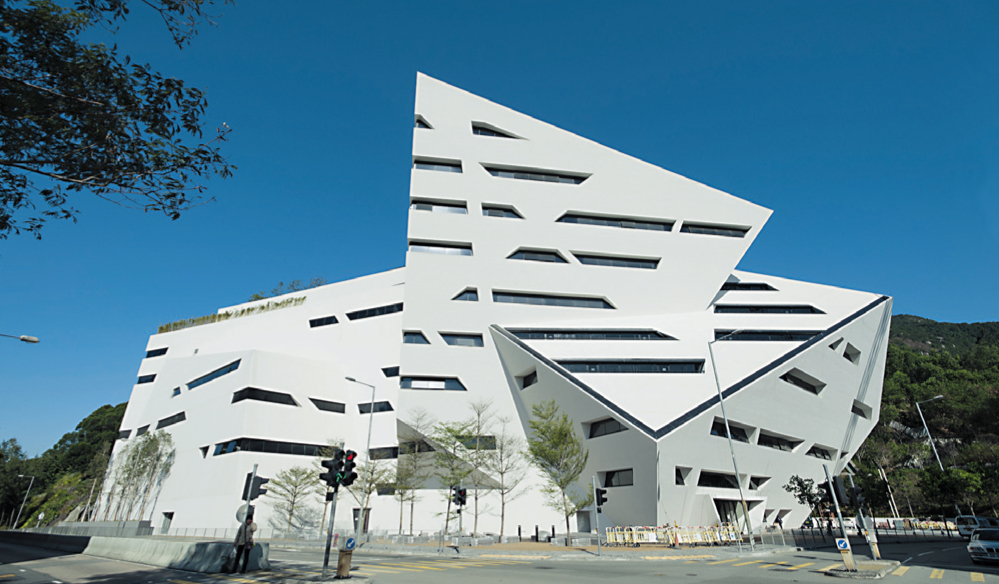
CityU’s newly completed Multi-media Building
|

Improvement works to Joint Sports Centre
|
|
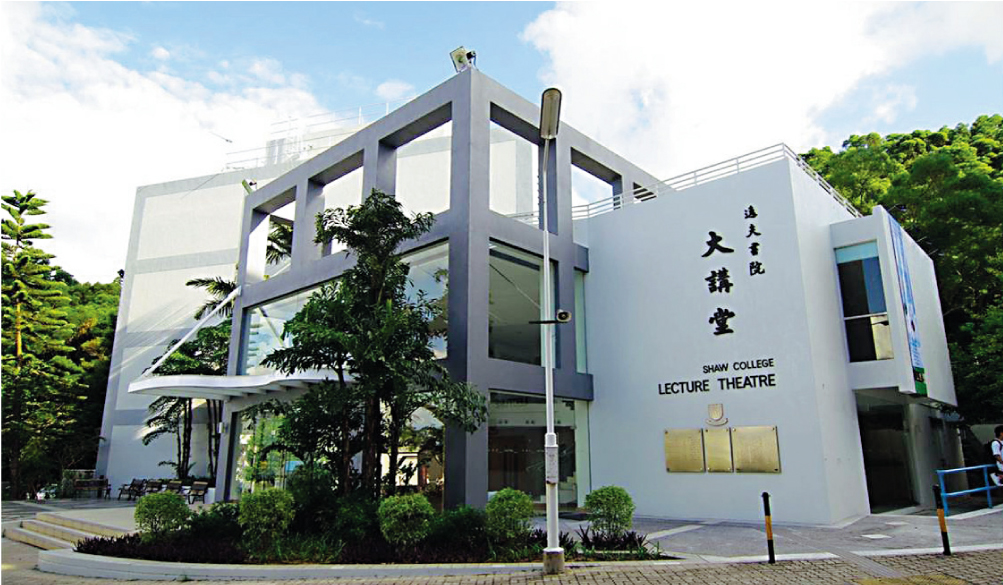
Major renovation and upgrading of the lecture theatre at Shaw
Campus of CUHK
|
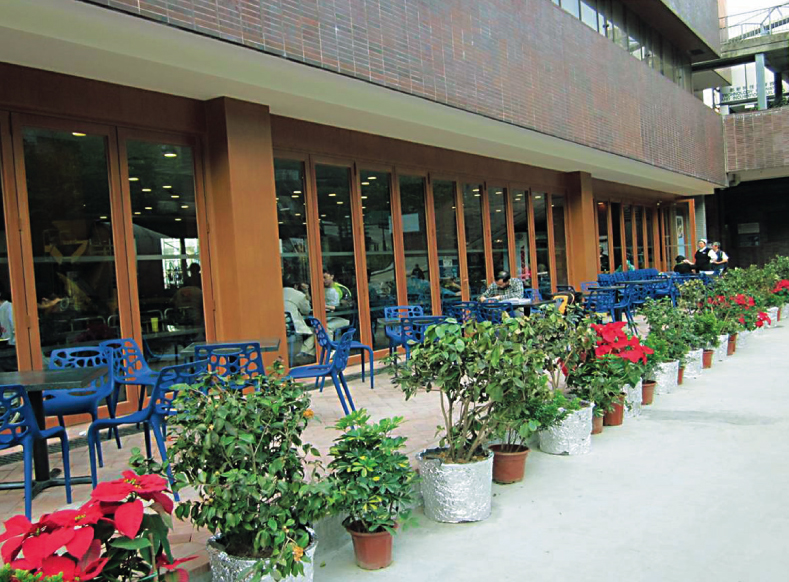
Construction of food courts and multi-purpose area
at covered podium of Haking Wong Building of HKU
|
Financial Reporting
and Monitoring
The capital grants are charged to the Capital Works
Reserve Fund and are part of the Capital Works Programme of the Government. Institutions’ projects
under capital subvention follow the procedures for creating and managing a capital works project under the Capital
Works Programme. Institutions assume full responsibility and accountability for their projects under capital subvention. They ensure that works expenditure stays
strictly within the approved project estimate in accordance with the approved project scope i.e. the scope approved
by the Legislative Council for capital works projects exceeding $21 million, and the scope approved by the
UGC for Alterations, Additions, Repairs and Improvements projects up to $21 million.
Institutions have in place an appropriate system of cost control and monitoring mechanism for overseeing the
spending of public money having regard to economy, efficiency and effectiveness in the delivery of their
projects. In particular, institutions ensure proper procurement procedures are in place, taking reference
from Government’s latest rules and regulations applicable to public capital works.
Approved funds for the projects are released to the institutions on a monthly basis. Institutions are required to
submit a monthly statement on the financial position and a quarterly report on the progress of their projects. Upon
completion of a project, the institution should submit a statement of final accounts to the UGC and return
any unspent balance or unapproved expenditure to the Government.
Streamlining Administrative Procedures
Last year, the UGC embarked on a thorough exercise
to critically review the Notes on Procedures – a long established document setting out the functions and
responsibilities, regulatory matters, and the interplay among the Government, the UGC and all the funded
institutions – and eliminated unnecessary administrative procedures on a wide range of major areas, among which
is the streamlining of procedures for capital grants, and removing the requirement of seeking UGC’s approval on
major equipment purchases. We believe such revisions will considerably reduce the administrative burden of
institutions and the UGC, while enhancing the clarity of the ambit of each party’s responsibilities.
|



